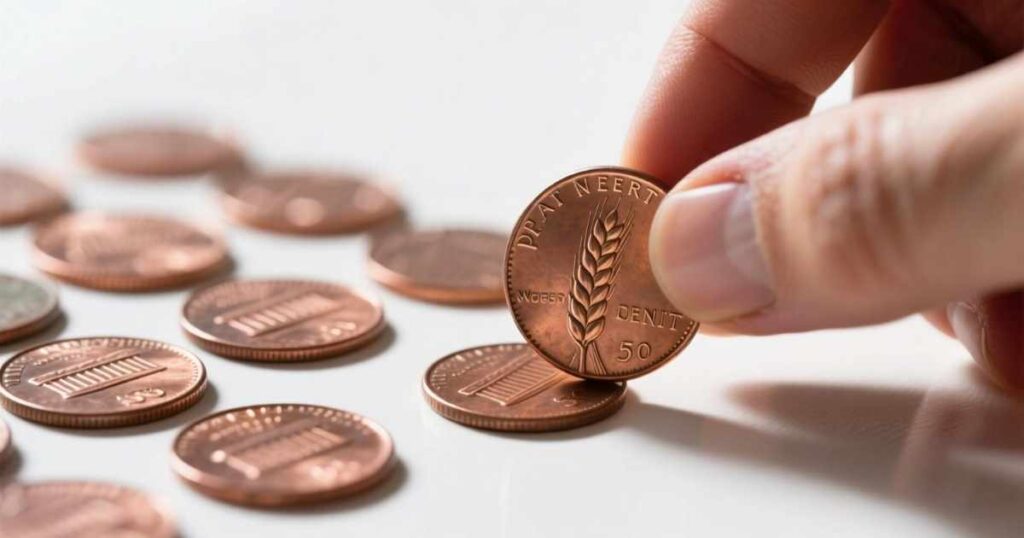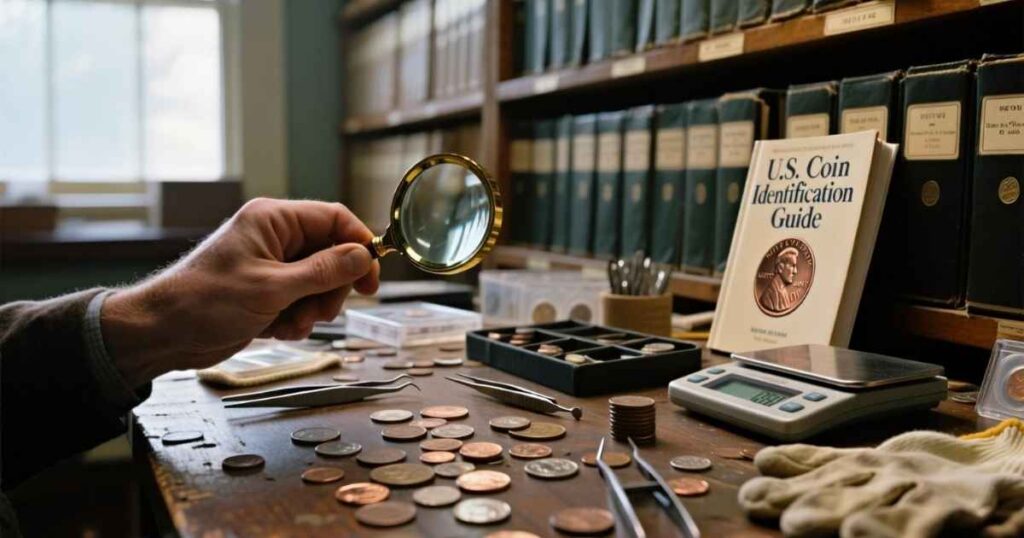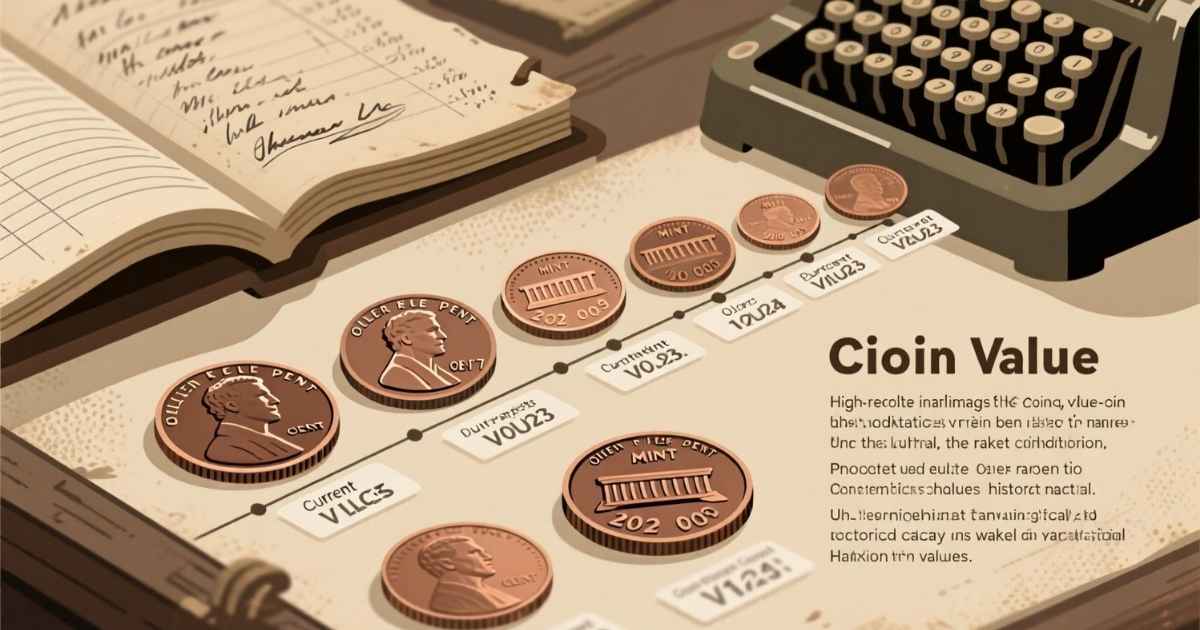The Value of Wheat Pennies by Year is a topic that excites many coin collectors. These coins were made from 1909 to 1958. Each year’s design and minting numbers affect how much they are worth today. Some pennies are common and worth only a few cents. Others are rare and can sell for hundreds or even thousands of dollars. Knowing the year helps collectors quickly guess a coin’s potential value.
The value also depends on the mint mark and the coin’s condition. Coins from certain years are harder to find, which makes them more valuable. Collectors often use year charts to compare prices. This makes The Value of Wheat Pennies by Year easier to understand. Even beginners can start learning with a simple list. A small coin from your change jar could be worth far more than you expect.
What Are Wheat Pennies?

Wheat pennies are U.S. one-cent coins minted between 1909 and 1958. They feature Abraham Lincoln on the front and two wheat stalks on the back. These coins were introduced to celebrate Lincoln’s 100th birthday. The wheat design represents prosperity and unity. Collectors value them for their historical significance and distinctive design. Although most wheat pennies are common, certain years or mint variations can be worth more. Their charm lies in their vintage look and connection to early 20th-century America.
Wheat pennies were made primarily from copper, with some variations during wartime when materials changed. For example, in 1943, most pennies were made from steel coated with zinc to save copper for the war effort. The coin’s reverse design changed in 1959 to the Lincoln Memorial. Today, wheat pennies are a favorite starting point for new coin collectors. They are affordable, easy to find, and offer a glimpse into America’s numismatic past.
Why Do Some Wheat Pennies Have More Value?
Some wheat pennies are more valuable because of rarity, mint errors, or limited production years. Coins minted in smaller quantities are naturally harder to find, increasing their value. Errors like double-dies, off-center strikes, or misprints can also make a coin unique and highly collectible. Older coins in better condition tend to command higher prices. Collectors often pay premiums for coins with both rarity and pristine condition. The story behind each coin adds to its historical and monetary worth.
Year and mint location play major roles in determining value. For example, a 1909-S VDB penny is one of the most sought-after wheat pennies due to low mintage. Similarly, the 1914-D and 1931-S pennies have limited production numbers, making them valuable. Market demand also impacts price—when collectors compete for rare coins, prices rise. Even common wheat pennies can become valuable if they feature unusual characteristics or are preserved exceptionally well.
Read Also: Famous Pet Names for Monkey
Understanding Mint Marks
Mint marks are small letters on coins indicating where they were made. For wheat pennies, these marks are found below the date on the coin’s front. The main U.S. mints producing wheat pennies were Philadelphia (no mint mark), Denver (D), and San Francisco (S). Mint marks are important to collectors because they help identify a coin’s origin and rarity. Some mint locations produced fewer coins, making those versions harder to find and often more valuable to collectors.
For instance, pennies with an “S” from San Francisco in certain years can be worth significantly more than their Philadelphia counterparts. The absence of a mint mark generally means the coin came from Philadelphia, which often had higher production. Knowing mint marks helps collectors quickly assess potential value. By comparing mint marks, collectors can spot rarer editions and focus their search on coins most likely to be valuable investments in their collection.
Rarest Wheat Pennies to Watch For

The rarest wheat pennies are those with low mintage numbers or unique errors. Some of the most famous include the 1909-S VDB, 1914-D, and 1931-S. These coins were produced in limited quantities, making them highly sought after. Another standout is the 1943 copper penny, which is extremely rare because most 1943 pennies were steel due to wartime metal shortages. Rarity, combined with condition, can push values into the thousands, attracting both novice and experienced collectors.
Error coins also rank among the rarest. Examples include double-die obverse pennies like the 1955 version, where the date and lettering appear doubled. Off-center strikes and repunched mint marks also increase rarity. Even a common year wheat penny can be rare if it has a striking error. Keeping a lookout for these rare coins, whether from old change jars or inherited collections, can sometimes lead to unexpected and valuable discoveries.
How Condition Affects Value
Condition is a major factor in determining a wheat penny’s worth. Coins are graded based on appearance, from “Poor” to “Mint State.” Higher-grade coins have minimal wear, sharp details, and clear markings, making them more appealing to collectors. Even rare dates can lose significant value if they are scratched, discolored, or heavily worn. Professional grading services can help authenticate and grade coins, giving buyers and sellers confidence in their value. A well-preserved coin always stands out in the market.
Collectors often store wheat pennies in protective holders to maintain their condition. Environmental factors like moisture, dirt, and handling can damage coins over time. Cleaning coins is generally discouraged, as improper cleaning can lower value. Instead, preservation focuses on safe storage and minimal handling. Whether common or rare, a wheat penny in excellent condition will always fetch a better price and be more desirable to serious collectors and investors.
Wheat Penny Values by Year
| Year | Mint Mark | Approximate Value (Good – Mint State) |
| 1909 | S VDB | $700 – $2,500+ |
| 1914 | D | $200 – $3,000+ |
| 1922 | No D | $300 – $2,000+ |
| 1931 | S | $75 – $200+ |
| 1943 | Copper | $100,000+ (extremely rare) |
| 1955 | Doubled Die | $1,000 – $15,000+ |
| 1958 | D | $0.05 – $1.00+ |
How to Start Collecting Wheat Pennies

Starting a wheat penny collection is exciting and affordable. Begin by checking your loose change, old jars, or family coin stashes. Many people unknowingly have wheat pennies tucked away. Once you’ve found some, sort them by year and mint mark. Use online guides or coin books to learn which ones might be rare. This basic step builds knowledge and helps you recognize valuable finds. You don’t need to spend much at first—collecting can start with just curiosity and patience.
After gathering some coins, invest in simple supplies like coin folders or plastic holders to store them safely. Avoid cleaning them, as this can damage their value. Join coin clubs or online forums to connect with other collectors, share tips, and trade coins. Visit coin shops or flea markets for new finds. Over time, you can focus on completing year sets, collecting by mint mark, or finding rare varieties to grow your collection.
Where to Sell or Get Coins Appraised
If you think you have valuable wheat pennies, the first step is to get them appraised. Reputable coin dealers, numismatic experts, or professional grading services can help determine authenticity and value. Look for dealers who are members of recognized organizations like the American Numismatic Association. Avoid selling before knowing the market price, as this can prevent you from losing money. A proper appraisal gives you confidence and sets realistic expectations for your coins’ worth in the current market.
When selling, you have multiple options. Local coin shops offer quick sales, while coin shows can connect you with serious buyers. Online marketplaces like eBay or specialized coin auction sites reach a wider audience but may require fees. Auction houses are best for very rare coins, as competitive bidding can raise prices. Always compare offers from multiple sources. Selling to the right buyer ensures you get fair value for your treasured wheat pennies.
FAQ’s
What does The Value of Wheat Pennies by Year mean?
The Value of Wheat Pennies by Year shows how much each coin is worth depending on its minting date and rarity in today’s market.
Why is The Value of Wheat Pennies by Year important for collectors?
The Value of Wheat Pennies by Year helps collectors quickly identify valuable coins, avoid low offers, and focus on the most profitable years for investment.
How can I check The Value of Wheat Pennies by Year?
You can check The Value of Wheat Pennies by Year using online charts, coin books, or professional appraisals that list market prices for every minting year.
Does coin condition affect The Value of Wheat Pennies by Year?
Yes, condition greatly impacts The Value of Wheat Pennies by Year, with higher-grade coins in pristine shape often worth far more than worn examples.
Can beginners learn The Value of Wheat Pennies by Year easily?
Beginners can learn The Value of Wheat Pennies by Year by starting with simple year-based guides, then gradually exploring mint marks and rare varieties.
Conclusion
The Value of Wheat Pennies by Year helps collectors understand which coins are worth keeping or selling. It shows how year, mint mark, and condition affect price. Even common pennies can have hidden value if they are from special years. Learning this information makes coin collecting more exciting and rewarding.
By studying The Value of Wheat Pennies by Year, anyone can spot rare finds and make better collecting choices. Whether you are a beginner or experienced, this knowledge is useful. A small effort to learn can lead to surprising discoveries and profitable results.

Elliot Cruz has been managing Groupchat Names for 4 years, ensuring a smooth and engaging experience for users. With expertise in content and community management, Elliot keeps everything organized and up to date.

